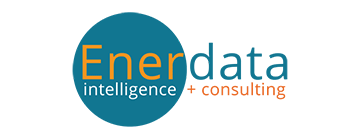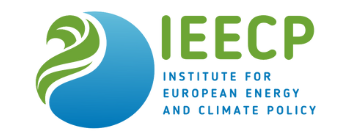Overview
Final energy consumption has slightly grown between the years 2000 and 2022. In 2022 the final energy consumption reached 24.5 Mtoe (at normal climate), i.e. it was by 0.5 Mtoe higher than in 2000. Energy savings and structural changes were not able to fully compensate the energy consumption growth driven by the activity and other effects. Whereas the energy consumption decreased significantly in industry (by 26%) and services (by 17%), it grew in households (by 12%) and in transport (by 65%).
Figure 1: Final energy consumption by sector (with climatic corrections)
Source: ODYSSEEEnergy efficiency of final consumption, as measured by ODEX, improved by an average of 1.5%/year from 2000 to 2022 (or 28% in total). The largest energy efficiency gains were obtained in the industry sector (2.8%/year), followed by services (1.4%/year) and residential (1.1%/year). The transport sector reached only a tiny decline in ODEX , it fell by 2% between 2000 and 2022.
Figure 2: Technical Energy Efficiency Index
Source: ODYSSEETotal energy savings reached 7.8 Mtoe in the period from 2000 to 2022, the bulk of it in industry (5 Mtoe, i.e. 64% of total savings); other savings were: 1.7 Mtoe in households, 0.9 Mtoe in services and only 0.1 Mtoe in transport. We can observe an increased growth of energy savings in last two years, which can be likely attributed mainly to increased energy prices and prices of CO2 permits.
Figure 3: Energy savings by sector
Source: ODYSSEEThe total energy supply increased rose by 0.4 Mtoe (+1%) in the period 2000-2022. Only other transformations, namely district heating, exhibited a decrease of energy consumption (by 1.4 Mtoe). We can observe energy consumption increase in all other sectors: by 0.5 Mtoe in final consumption, 0.8 Mtoe in power sector and by 0.6 Mtoe in non-energy uses.
Figure 4: Main drivers of the total energy supply variation
Source: ODYSSEEThe final energy consumption increased by 0.5 Mtoe in the period 2000-2022. The increase of final energy consumption caused by rise of activity (+10.6 Mtoe) prevails over all other drivers. Energy savings reached 7.8 Mtoe, structural effects led to consumption decrease by 1.2 Mtoe, and other effects brought about a reduction of 1 Mtoe; climate change was negligible (- 0.1 Mtoe).
Figure 5: Main drivers of the final energy consumption variation
Source: ODYSSEEAccording to the latest NECP update the required end-use energy consumption should decrease from 25.4 Mtoe (latest 2021 data) to 20.2 Mtoe in 2030. The Czech Republic has decided to reach the target by alternative measures. Two measures are the most important - the New Green Savings Programme 2021+, with expected energy total cumulative savings of 2.04 Mtoe in the period 2021 - 2027, which focuses on energy savings in living buildings and the Operational Program Technology and applications for competitiveness 2021-2027 in industry sector with expected total cumulative energy savings of 0.21 Mtoe in the period 2021 - 2027. Big expectations are related to the introduction of the Modernisation Fund, which could bring total cumulative energy savings of 0.7 Mtoe in industry and 0.4 Mtoe in services and public sector. A typical cross-cutting measure is represented by the State programme to promote energy savings 2022+ (EFEKT 3), which concentrates on non-investment subsidies.
Table 1: Sample of cross-cutting measures
| Measures | NECP measures | Description | Expected savings, impact evaluation | More information available |
|---|---|---|---|---|
| Voluntary scheme for improving energy efficiency | Yes | The voluntary scheme for improving energy efficiency is an alternative policy measure on the basis of a voluntary arrangement between the State and stakeholders to carry out end-consumer end-use activities aimed at reducing final energy consumption. The measure targets households, industry, services as well as public sector. | 18.5 TJ | Link |
| Voluntary agreements on energy efficiency with businesses | No | Voluntary agreements on energy efficiency measures and reporting between the Ministry of Trade and Industry and single businesses. | 3.40 TJ | Link |
| State programme to promote energy savings 2022+ (EFEKT 3) | Yes | The State programme to promote energy savings (EFEKT 3 / EFEKT 2022+) focuses on investment and non-investment aid for energy efficiency support measures. | 12.5 TJ | Link |
Buildings
Energy consumption in buildings fluctuated around 10 Mtoe in the period 2000 - 2022 but the consumption structure has changed. The share of residential buildings rose from 65% in 2000 to 71% in 2022. That means the consumption in residential building increased from 6.7 Mtoe to 7.4 Mtoe, i.e. by 12%. The consumption in service buildings dropped from 3.6 Mtoe to 3 Mtoe, i.e. by 17%.
Figure 6: Final energy consumption in buildings (with climatic corrections)
Source: ODYSSEEEnergy consumption for space heating rose by 19% in the period from 2000 to 2022 despite massive waves of building insulation and its share in total energy consumption of households increased from 67% to 72%. Energy consumption for cooking and lighting decreased by 12% and 7%, respectively; consumption for electric appliances increased by 8%.
Figure 7: Energy consumption by end-use of households (with climatic corrections)
Source: ODYSSEEThe energy consumption for space heating per m2 decreased by 10% in the period 2000 - 2022, but it stagnated during last 15 years.
Figure 8: Energy consumption of household space heating per m2 (with climatic corrections)
Source: ODYSSEE; ambient heat included.Energy consumption for water heating per dwelling decreased by 25% in the period 2000-2022. Energy consumption per dwelling for cooking and electric appliances and lighting dropped by 15% and 10%, respectively, in the same period.
Figure 9: Energy consumption per dwelling by end-use (except space heating)
Source: ODYSSEEElectricity consumption per dwelling was stable over the period 2000-2022. Shares of individual end uses changed only slightly. The share of thermal uses grew by 3 pp, from 56% to 59%, and that of electrical appliances from decreased by 2 pp, from 37% to 35%, and lighting by 1 pp, from 7% to 6%; the share of air conditioning grew from 0% to 1%.
Figure 10: Electricity consumption per dwelling by end-use (with climatic corrections)
Source: ODYSSEEEnergy consumption of households rose by 1.72 Mtoe, from 5.44 Mtoe in the year 2000 to 7.16 Mtoe in 2022. Even though there were energy savings of 1.7 Mtoe, they were overweighted by more dwellings (+1.11 Mtoe), larger homes (+0.97 Mtoe), more appliances (+0.28 Mtoe) and other factors (behaviours) (+0.12 Mtoe). Climate differences between the two years were negligible (-0.06 Mtoe).
Figure 11: Main drivers of the energy consumption variation in households
Source: ODYSSEE; ambient heat included.Energy consumption for space heating of households rose by 0.21 Mtoe, from 4.23 Mtoe to 4.02 Mtoe between 2000 and 2022 years. Energy savings of 1.08 Mtoe were more than offset by increase of consumption due to a growth in the dwelling stock (“activity”) (+0.75 Mtoe), larger homes (+0.65 Mtoe), penetration of district heating (+0.16 Mtoe) and other factors (+0.37 Mtoe).
Figure 12: Main drivers of the space heating consumption variation of households
Source: ODYSSEEThe energy consumption per employee in service sector decreased by 1.1%/year since 2000. After a stagnation from 2014 to 2019, it dropped significantly in the last three years. The electricity consumption per employee grew by 0.4%/year due to the diffusion electrical appliances in offices over the same period.
Figure 13: Energy and electricity consumption per employee in services (with climatic corrections)
Source: ODYSSEEThe main measure for the building sector is the New Green Savings Programme 2021+ which focuses on family houses and apartment buildings. The Operational Program Technology and applications for competitiveness 2021-2027 aims, besides others, at improving the energy performance of buildings in the business sector and the Operational Programme Environment 2021-2027 has a Priority Axe supporting improvement of energy efficiency in public buildings. Additional support to public buildings and business sector in the City of Prague (Prague is excluded from most operational programmes) is provided from the Modernisation Fund.
Table 2: Sample of policies and measures implemented in the building sector
| Measures | NECP measures | Description | Expected savings, impact evaluation | More information available |
|---|---|---|---|---|
| New Green Savings Programme 2021+ | Yes | The New Green Savings Programme 2021+ focuses on investment support for improving energy performance of single-family and apartment buildings. Partial and comprehensive renovation of residential buildings are supported. | 14.27 TJ | Link |
| Prohibition of solid fuel boilers of 1st and 2nd class | Yes | This regulatory measure lays down minimum standards for the operation of stationary combustion sources of energy that are set beyond the requirements of EU law. | 8.00 TJ | Link |
| Information campaign on raising awareness about energy efficiency | Yes | The measure, managed by the Ministry of Industry and Trade, aims to raise awareness of energy efficiency with a view to changing the behaviour of energy consumers and reducing energy consumption. | 3.33 TJ | Link |
Transport
Road transport consumes 97% of energy in the transport sector. Cars account for 61% of the sector’s consumption (56% in 2000) and road freight transport for 35% (26% in 2000). Bus transport represents 5.7% and rail transport 3.1%. Domestic air and water transport are negligible (around 0.1%).
Figure 14: Transport energy consumption by mode
Source: ODYSSEEWe observe an adverse trend in switching from public transport modes to cars in passenger transport. Share of car traffic grew from 67% to 77% between years 2000 and 2022.
Figure 15: Modal split of inland passenger traffic
Source: ODYSSEEWe can observe a similar adverse trend in switching from railways to trucks in freight transport. The share of freight road transport grew from 62% to 78% between 2000 and 2022.
Figure 16: Modal split of inland freight traffic
Source: ODYSSEEThere was a peak of energy consumption of cars per passenger-km about the year 2010. The number of cars grew very rapidly, and the growth was covered mainly by old second-hand cars with high specific consumption. The share of new or at least newer second-hand cars started to grow about the year 2010 and led to decreasing energy consumption per passenger-km (-1.7%/year).
Figure 17: Energy consumption of cars per passenger-km
Source: ODYSSEETransport energy consumption increased by 65% in the period 2000 - 2022 (+ 2.74 Mtoe). This trend is caused by the development of transport activity (+1.96 Mtoe - more passenger-kilometre and tonne-kilometre), adverse modal shift (+0.51 Mtoe - shift from railways to road transport) and by other effects (lower load factor) (+0.38 Mtoe). Energy savings amounted only to 0.11 Mtoe.
Figure 18: Main drivers of the energy consumption variation in transport
Source: ODYSSEEThere are two new programmes supporting energy efficiency of transport. Integrated Regional Operational Programme supports purchases of vehicles using alternative propulsion. Modernisation Fund supports modernisation of transport in business sector and of public transport. Support of public transport is important, because switch from public to road transport occurred in the Czech Republic during past years.
Table 3: Sample of policies and measures implemented in the transport sector
| Measures | NECP measures | Description | Expected savings, impact evaluation | More information available |
|---|---|---|---|---|
| Modernisation Fund 2021-2030 (part transport) | Yes | The Modernisation Fund in the Czech Republic focuses on investment aid for improving energy performance of non-residential public and state buildings as well as business buildings, improving energy performance of technological and production processes in industry as well as energy production facilities, and improving energy performance of transport. | 3.08 TJ | Link |
| Integrated Regional Operational Programme 2021-2027 - SC 2.1 Sustainable multimodal urban mobility | Yes | Investment support for the acquisition of public transport vehicles using alternative propulsion. | 1.92 TJ | Link |
| Promoting the ecodriving of cars | Yes | The measure aims to promote energy-efficient driving through financial aid for the organisations of educational activities in the field of energy-efficient driving. | 0.20 TJ | Link |
Industry
The industry sector exhibits the fastest decline in the energy consumption. Its final energy consumption decreased rapidly by 1.4 %/year. The largest reductions were in steel industry (-1.09 Mtoe), other branches (-0.92 Mtoe) and chemical industry (-0.49 Mtoe).
Figure 19: Final energy consumption of industry by branch
Source: ODYSSEESteel industry exhibits decreasing trend of unit consumption (-20% or -1%/year in the period 2000 - 2022. A rather opposite trend was observed for the specific energy consumption of pulp and paper production, which grew by 6% in the same period, with quite big fluctuations.
Figure 20: Unit consumption of energy‐intensive products (toe/t)
Source: ODYSSEEIndustry reached remarkable energy savings (5.03 Mtoe) in the period 2000 - 2022 and large structural changes towards less energy inessive branches, which reduced consumption by another 1.75 Mtoe. The increased industrial activity led to higher energy consumption by 4.66 Mtoe. As the savings and structural changes were higher than the activity driven growth, the total energy consumption in industry dropped by 2.34 Mtoe.
Figure 21: Main drivers of the energy consumption variation in industry
Source: ODYSSEEThe Operational Programme Technology and applications for competitiveness remains one of important measures also in the period 2021 - 2027. It offers support to energy efficiency in industry through financial incentives (investment subsidies and low interest loans). Expected total cumulative savings are 8.8 Mtoe. However, the Modernisation Fund became the biggest source of subsidies in industry with expected savings of 29.5 Mtoe.
Table 4: Sample of policies and measures implemented in the industry sector
| Measures | NECP measures | Description | Expected savings, impact evaluation | More information available |
|---|---|---|---|---|
| Modernisation Fund 2021-2030 (part industry) | Yes | The Modernisation Fund in the Czech Republic focuses on investment aid for improving energy performance of non-residential public and state buildings as well as business buildings, improving energy performance of technological and production processes in industry as well as energy production facilities, and improving energy performance of transport. | 5.90 TJ | Link |
| Operational Program Technologies and Application for Competitiveness 2021-2027 - SC 4.1 Energy efficiency measures (part industry) | Yes | ERDF financial mechanism providing investment aid for increasing the energy efficiency of technological and production processes in industry and on improving the energy performance of buildings intended for business. Implementing authority of the OP TAC is the Ministry of Industry and Trade. | 1.47 TJ | Link |
| Operational Programme Enterprise and Innovation for Competitiveness 2014 - 2020 (part industry) | Yes | Prdecessor of the Operational Program Technologies and Application for Competitiveness with similar goals. | 0.96 TJ | Link |





